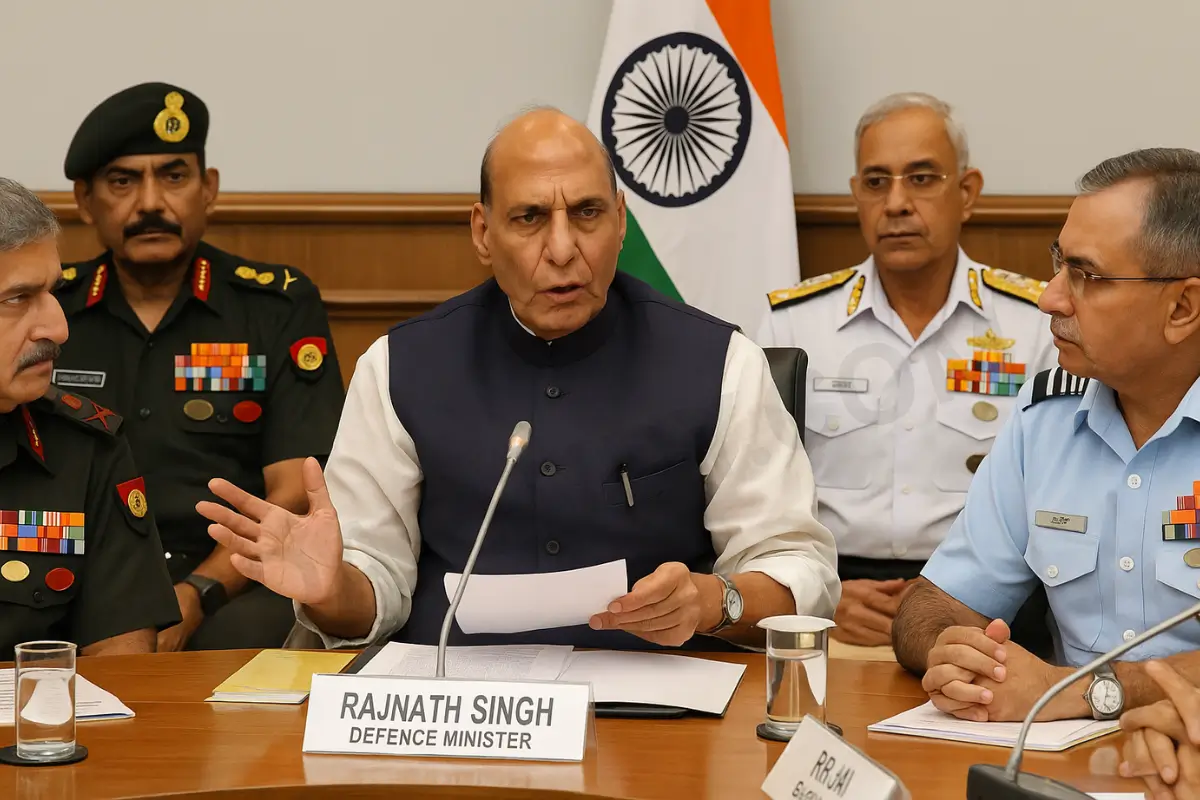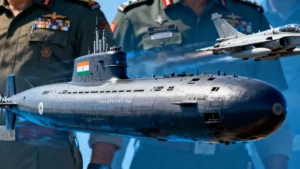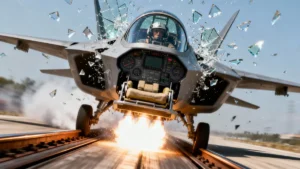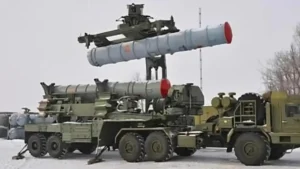A record-shattering ₹1.05 lakh crore—this is the scale of India’s latest defence investment, as the Defence Acquisition Council Approves ₹1.05 Lakh Crore in New Projects to supercharge the nation’s military modernisation and self-reliance. In a landmark meeting chaired by Defence Minister Rajnath Singh, the DAC cleared 10 capital acquisition proposals, all under the ‘Buy (Indian–IDDM)’ category, ensuring every rupee fuels indigenous innovation and strengthens India’s own defence industry.
These projects will deliver cutting-edge systems—ranging from Armoured Recovery Vehicles and Electronic Warfare Systems to advanced naval mines and unmanned submersibles—across the Army, Navy, and Air Force, directly boosting battlefield efficiency, maritime security, and air defence. With a significant increase in the defence budget, this unprecedented approval not only marks a bold leap for Make in India and Aatmanirbhar Bharat but also positions India’s armed forces for rapid, next-generation upgrades in the face of evolving global threats.
Defence Acquisition Council Approves ₹1.05 Lakh Crore in New Projects
The Defence Acquisition Council Approves ₹1.05 Lakh Crore in New Projects, signalling one of the most ambitious pushes for indigenous military modernisation in India’s history. In a single sweeping decision, the DAC cleared 10 capital acquisition proposals, each designed to rapidly upgrade the operational capabilities of the Army, Navy, and Air Force—all under the ‘Buy (Indian–IDDM)’ category to maximise domestic innovation and self-reliance.
Key Highlights: What was approved?
- All 10 proposals are to be executed through Indian companies, ensuring a major boost for the domestic defence industry and MSMEs (Ministry of Micro, Small and Medium Enterprises).
- The acquisitions cover a wide spectrum of needs: from battlefield mobility and air defence to maritime security and advanced inventory management.
- The urgency is clear: these projects are designed to fill critical capability gaps and provide rapid, tangible upgrades to India’s armed forces.
- The “Buy (Indian-IDDM)” category is part of India’s Defence Procurement Procedure (DPP) that emphasises Indigenously Designed, Developed, and Manufactured (IDDM) products. This means that the equipment or system must be designed and developed in India, and at least 50% of its components, sub-assemblies, and raw materials—based on cost—must be sourced within the country.
Approved Projects at a Glance
| Project/Equipment | Estimated Value | Indigenous Content |
|---|---|---|
| Armoured Recovery Vehicles (ARVs) | Included in total | 50%+ (Indian-IDDM) |
| Electronic Warfare System (EWS) | Included in total | 50%+ (Indian-IDDM) |
| Integrated Common Inventory Mgmt. | Included in total | 50%+ (Indian-IDDM) |
| Surface-to-Air Missiles | Included in total | 50%+ (Indian-IDDM) |
| Moored Mines | Included in total | 50%+ (Indian-IDDM) |
| Mine Counter Measure Vessels (MCMVs) | ₹44,000+ crore | 50%+ (Indian-IDDM) |
| Super Rapid Gun Mounts (SRGMs) | Included in total | 50%+ (Indian-IDDM) |
| Submersible Autonomous Vessels | Included in total | 50%+ (Indian-IDDM) |
| Additional Naval/Maritime Systems | Included in total | 50%+ (Indian-IDDM) |
| Tri-Services Logistics Upgrades | Included in total | 50%+ (Indian-IDDM) |
Why this matters:
These approvals will deliver next-generation battlefield recovery vehicles, advanced electronic warfare systems, state-of-the-art naval mines and mine countermeasure vessels, and unmanned underwater platforms—each critical for India’s operational preparedness and strategic deterrence. The Defence Acquisition Council’s move not only accelerates military modernisation but also sets a new benchmark for indigenous defence procurement, with all projects mandating at least 50% Indian content.
Focus on Indigenous Procurement
A defining feature of the recent decision, as the Defence Acquisition Council Approves ₹1.05 Lakh Crore in New Projects, is the unprecedented emphasis on indigenous procurement. Every one of the 10 approved capital acquisition proposals falls under the ‘Buy (Indian–IDDM)’ category, ensuring that 100% of the projects are reserved for Indian vendors. This means the entire ₹1.05 lakh crore investment will directly benefit India’s domestic defence industry, with at least 50% indigenous content mandated across all contracts.
This strategic focus is a major boost for the Make in India and Aatmanirbhar Bharat initiatives, propelling Indian defence manufacturing to new heights. By prioritising local vendors and MSMEs, the move is set to generate thousands of skilled jobs, foster innovation, and accelerate the development of advanced military technologies within the country. The Ministry of Defence underscored this vision, stating, “These approvals reaffirm the government’s commitment to self-reliance and indigenous capability development in the defence sector.”
The Defence Acquisition Council’s approach not only strengthens India’s security but also positions the nation as a global hub for defence production, setting a new benchmark for future military modernisation efforts.Impact on Military Modernisation
Recent approvals for capital acquisition are set to propel the next phase of India’s military modernisation, impacting the Army, Navy, Air Force, and their joint operational capabilities. For the Army, the introduction of advanced armoured vehicles, electronic warfare systems, and upgraded artillery—including the K9 Vajra-T howitzers and Pinaka rocket systems—will enhance mobility, precision, and rapid response along crucial borders. The Navy’s modernisation efforts include new mine countermeasure vessels, BrahMos supersonic cruise missiles, and the commissioning of submarines like INS Vagsheer, all aimed at strengthening maritime dominance and deterrence in the Indian Ocean Region.
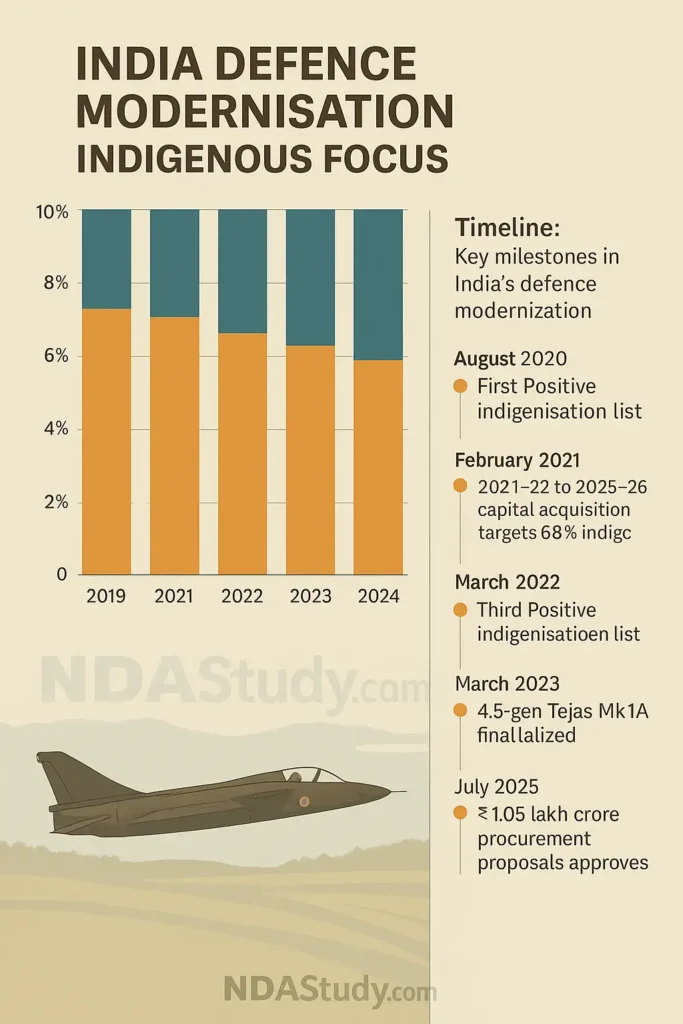
The Air Force is set to receive Tejas Mk1A fighters, Light Combat Helicopters (LCH) Prachand, and enhanced air defence systems, providing a technological edge and improved airspace security. These procurements will also accelerate the operationalisation of Integrated Theatre Commands and Integrated Battle Groups, promoting cooperation and synergy across the services for multi-domain operations. Most platforms and upgrades are scheduled for induction between 2025 and 2027, aligning with the Ministry of Defence’s declared ‘Year of Reforms’ and India’s commitment to transforming its armed forces into a technologically advanced and combat-ready force.
Economic & Strategic Significance
The Defence Acquisition Council Approves ₹1.05 Lakh Crore in New Projects, marking a transformative moment for India’s defence sector with sweeping economic and strategic significance. By prioritising indigenous defence manufacturing, this approval is set to invigorate the domestic industry, directly benefitting MSMEs and creating thousands of skilled jobs across the supply chain. The focus on local procurement not only accelerates innovation and strengthens the ecosystem for Indian defence manufacturing but also ensures that critical military technologies are developed and maintained within the country.
Also Read:
Pakistan Begs US for TPS-77 Radars After Indian Airstrikes Exposed Air Defense Weakness
China’s FTC-2000G Fighter Shot Down in Myanmar: Shockwaves for India’s Security and Northeast
India-US 10-Year Defence Pact 2025: A Game-Changer for Indian Security, Industry, and Youth
Strategically, this move significantly enhances India’s deterrence and regional posture, particularly in the Indo-Pacific, by equipping the armed forces with advanced, homegrown platforms such as Armoured Recovery Vehicles, Electronic Warfare Systems, and Mine Counter measure Vessels. Compared to previous DAC approvals, the scale and urgency of this ₹1.05 lakh crore package stand out, reflecting a decisive shift from import dependency to self-reliance and setting a new benchmark for future modernisation. This bold step positions India as a leader in indigenous defence production and reinforces its status as a key player in regional security.
Expert Reaction & Analysis
Defence analysts widely view the move as a paradigm shift, with the Defence Acquisition Council Approves ₹1.05 Lakh Crore in New Projects being hailed as both timely and transformative for India’s long-term military roadmap. Experts highlight the sheer scale and urgency of these approvals, noting that the focus on indigenous procurement marks a decisive departure from past reliance on imports. According to leading defence commentators, the inclusion of next-generation Armoured Recovery Vehicles, Electronic Warfare Systems, and Quick Reaction Surface-to-Air Missiles will not only fill critical capability gaps but also future-proof the armed forces against evolving threats.
Frequently Asked Questions (FAQs)
1. What is the Defence Acquisition Council (DAC)?
The Defence Acquisition Council (DAC) is the highest decision-making body in India’s Ministry of Defence for capital procurement. Chaired by the Defence Minister, it includes the Chief of Defence Staff and the chiefs of the Army, Navy, and Air Force. The DAC was established in 2001 to streamline and expedite the approval and acquisition of equipment and systems for the armed forces, ensuring timely and coordinated modernisation.
2. What are capital acquisition proposals?
Capital acquisition proposals are formal plans for the procurement of major military equipment, platforms, and systems—such as vehicles, weapons, and technology—essential for the modernisation and operational readiness of the armed forces. These proposals are evaluated and approved by the DAC before procurement begins.
3. How much value in new projects did the DAC approve in July 2025?
The DAC approved 10 major capital acquisition proposals worth approximately ₹1.05 lakh crore (₹1.05 trillion) in July 2025. All projects are to be sourced through Indian companies under the ‘Buy (Indian–IDDM)’ category, emphasising indigenous design, development, and manufacturing.
4. What is the significance of indigenous procurement in these approvals?
All approved projects fall under the ‘Buy (Indian–IDDM)’ category, meaning they will be executed by Indian vendors with a minimum of 50% indigenous content. This approach boosts the domestic defence industry, supports MSMEs, creates jobs, and advances the government’s Make in India and Aatmanirbhar Bharat initiatives.
5. Which branches of the armed forces will benefit from these acquisitions?
The Indian Army, Navy, and Air Force—as well as joint tri-services operations—will benefit. The approvals include Armoured Recovery Vehicles, Electronic Warfare Systems, Integrated Inventory Management, Surface-to-Air Missiles, Moored Mines, Mine Counter Measure Vessels, Super Rapid Gun Mounts, and Submersible Autonomous Vessels, covering land, air, and maritime domains
6. How will these acquisitions impact India’s military modernisation?
These acquisitions will significantly upgrade India’s operational capabilities, providing advanced technology, improved mobility, enhanced air defence, and strengthened maritime security. The focus on indigenous platforms ensures long-term self-reliance and positions India as a regional defence leader.
7. How does this DAC approval compare to previous years?
The ₹1.05 lakh crore package is among the largest ever approved in a single session, reflecting a substantial increase in both value and indigenous focus compared to previous Defence Acquisition Council decisions. It marks a decisive shift toward self-sufficiency and rapid modernisation.
8. What is the Acceptance of Necessity (AoN) in defence procurement?
Acceptance of Necessity (AoN) is a formal approval granted by the DAC, signifying that a particular procurement is essential for the armed forces. It is the first step in the procurement process, allowing the Ministry of Defence to proceed with tendering and contracting.
9. How does this decision support the Make in India and Aatmanirbhar Bharat initiatives?
By mandating that all new acquisitions be sourced from Indian vendors with high indigenous content, the DAC’s decision directly supports Make in India and Aatmanirbhar Bharat. It encourages domestic innovation, strengthens the defence manufacturing ecosystem, and reduces reliance on imports.
10. What is the expected timeline for the induction and operationalisation of these projects?
Most of the approved platforms and systems are expected to be inducted and operationalised within the next three to five years, aligning with India’s goal of rapid force modernisation and enhanced national security.
Analysts underscore that prioritising local manufacturing under the ‘Buy (Indian-IDDM)’ category is set to accelerate India’s journey towards self-reliance, foster innovation, and strengthen the domestic defence ecosystem. This, they argue, will have a multiplier effect—spurring technology transfer, boosting MSMEs, and creating a robust pipeline for future upgrades. The Defence Ministry’s statements reinforce this sentiment, emphasising that these acquisitions will provide “higher mobility, effective air defence, better supply chain management, and augment the operational preparedness of the Armed Forces”.
Author’s Words
The approval of ₹1.05 lakh crore in new projects is nothing short of historic, setting a bold new benchmark for India’s defence ambitions. As the Defence Acquisition Council Approves ₹1.05 Lakh Crore in New Projects, we are witnessing a decisive leap toward self-reliance, technological innovation, and enhanced national security. These sweeping capital acquisitions will not only modernise the armed forces but also energise the Indian defence industry and create thousands of new opportunities for skilled professionals.
Stay with us for live updates on every milestone, and don’t forget to share this article with your network to spread the word about India’s defence transformation. For in-depth coverage and the latest defence news, subscribe now and be the first to know how these landmark decisions will shape the nation’s future security landscape.
Stay Tuned & Stay Connected!
